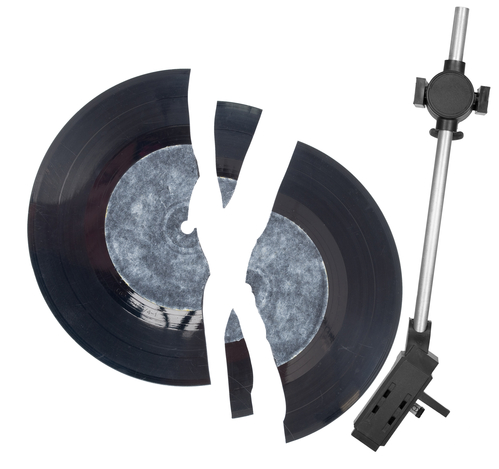 Last month S&P Global published its 2016 mid-year SPIVA Canada Scorecard, which compares the performance of actively managed Canadian-based mutual funds with their benchmarks.
Last month S&P Global published its 2016 mid-year SPIVA Canada Scorecard, which compares the performance of actively managed Canadian-based mutual funds with their benchmarks.
The conclusion is clear: actively managed funds, after fees, underperform their benchmarks over time. Investors may be better served using passively managed alternatives such as index tracking mutual funds and exchange traded funds (ETFs).
This evidence is so consistent and presented so often it almost sounds like a broken record, but given how many Canadians still pay high mutual fund fees for under-performing funds, we believe it’s a broken record still worth listening to.
Before we dive into the data, it’s worth noting a few important methodological points highlighted by S&P:
- The study compares the performance of each fund to that of a benchmark selected to provide a sensible “apples to apples” comparison.
- The survey looks at both “asset-weighted” and “equal-weighted” average fund performance and the conclusions drawn are similar.
- The study accounts for “survivorship bias”, that is it includes funds that were closed or merged with other funds over the relevant time period.
Many funds don’t even survive, let alone outperform
This last point is really important. According to the study, only 58% of Canadian Equity funds actually survived the last 5 years. One can only assume that those funds that didn’t survive were not stellar performers. US and International Equity funds fared a little better with 70% of US funds and 84% of International funds surviving the full 5 years.
So how many funds survived and outperformed their benchmark? In the Canadian Equity category, only 29% of actively managed funds outperformed their benchmark over the last 5 years. Those aren’t very good odds considering that it’s nearly impossible to predict in advance which funds are likely to outperform.
Diversifying outside Canada important, but performance of active US and International Equity funds is worse
The Canadian stock market is fairly concentrated in certain industries and specific large cap stocks so it’s important for Canadian investors to diversify outside of Canada. Unfortunately those looking to diversify using active US and International Equity funds won’t be happy with the SPIVA results. Only 14% of International Equity funds outperformed their benchmark and 0% (yes, none!) of US Equity funds outperformed their benchmark over the 5-year period.
So maybe you’re feeling lucky and think your Canadian Equity manager has some sort of advantage and will be one of the lucky out-performers. Once you look to diversify outside of Canada (and you should) the odds drop dramatically (and infinitely in the case of US Equity managers!)
The study only takes us to half-way through 2016. We wonder how active fund managers have fared through the latter half of the year with such tumultuous events as the US election. Given that most market pundits not only didn’t predict the outcome of the election correctly but missed how the market would react in response leads us to believe that when the next SPIVA scorecard is published, the same old broken record will still be spinning.
The data speaks for itself but we’ll conclude by saying that when you invest in “the market” by holding passive investment funds or ETFs, you get the market return with a fair degree of certainty. You will not experience the additional uncertainty of whether your chosen active fund will outperform or underperform the market.
Peer reviewed academic data shows that over longer periods of time very few active funds are able to outperform the market and those funds that do are nearly impossible to identify in advance. The fees for passive investment funds and ETFs are much lower than those for active funds. Again, active fund management comes with lower average investment returns after fees and less certainty of performance versus the market.
 Graham Bodel is the founder and director of a new fee-only financial planning and portfolio management firm based in Vancouver, BC., Chalten Fee-Only Advisors Ltd. This blog is republished with permission: the original ran last Friday (November 18th) here.
Graham Bodel is the founder and director of a new fee-only financial planning and portfolio management firm based in Vancouver, BC., Chalten Fee-Only Advisors Ltd. This blog is republished with permission: the original ran last Friday (November 18th) here.



Hi Graham – I am a committed ETF investor – have been since the year 2000.
But I find these articles that compare Actively Managed Funds (AMFs) to ETFs are always missing a key component.
This article states that 71% of Canadian AMFs underperform their benchmark. Fair enough. But using that same measuring stick, 99% of ETFs underperform their benchmark!
So the essential piece of information that’s missing is “by how much”.
If an AMF underperforms by 0.3%, and the equivalent ETF underperforms by 0.5%, the AMF would be a better choice.
In the future, these articles would be much more useful, and more convincing, if they did a true apples to apples comparison, and stated the average amount by which AMFs and ETFs underperformed the markets.
Hi Joebaba,
Thanks for your feedback- you are absolutely correct, the magnitude of the underperformance is very important.
Vanguard Canada periodically publishes updates to it’s work on the case for indexing which shows not only the number of firms that outperform their benchmarks over various periods of time but also the median excess return of those funds. In their report from April of 2015 they show that median excess returns for active Canadian Large Cap Equity funds versus their benchmark for the 10 year period through the end of 2014 is -0.81%. Active US and International Equity funds fared much worse. And this data is for the survivors! Adjusting for survivorship bias makes the case for indexing even more compelling.
While it’s true that index-tracking ETFs also underperform their benchmarks their fees are usually so much lower that they have a significant advantage over active funds. Performance differentials can be attributed mainly to cost difference over longer periods of time.
Your comments also raise another important point when making comparisons. Canadian mutual funds also often bundle commissions paid to advisors for their ongoing advice and it’s unfair to compare a bundled after cost return figure to an after cost return figure for an ETF or other fund product that is used without the paid services of an advisor. Now arguably a lot of Canadians pay the bundled expense ratio and don’t really receive much ongoing advice but that is the subject of another post!
Graham,
There are huge problems with this SPIVA report. It compares mutual funds with advisors after fees with indexes before fees and without advice. It implies index funds or ETFs would be better, but ignores their fees (as Joe Baba pointed out), and ignores tracking error of ETFs, (which averages .42%).
The conclusion is also false. Investors with advisors grow wealth faster than those without advisors. (https://edrempel.com/2-things-must-focus-financially-secure/ ). Investors with investment-focused advisors have twice the assets of DIYers, and those with planning-focused advisors have 4 times the assets (after controlling for age, income, etc.). The longer they worked with the advisor, the larger the advantage over the non-advised.
The reasons relate to encouraging better saving behaviour, sticking with investments when they are down, using RRSPs & TFSAs properly, holding less cash – and especially having a long term focus.
I see it daily talking with Canadians as a fee-for-service financial planner. When I meet a new client, if they have an ETF portfolio, it is usually tiny – typically $25-50,000. When I meet a client that has mutual funds (meaning they had a previous advisor that did not prepare a plan for them), a typical portfolio is $200-300,000.
In short, ETF investors are mainly non-advised people with no plan and tiny portfolios. Mutual fund investors generally have sales-focused advisors, but decent portfolios.
The SPIVA study is very muddy. Is it attempting to study the benefits of advice or comparing index funds and ETFs to mutual funds? It actually provides no conclusion for either.
The conclusions are clear that advice is worth the cost, because of the far larger portfolios.
Studying fund managers has not been adequately done. We need a study that compares F-class mutual funds with ETFs after fees and after tracking error. I have not seen a proper study of this.
Such a study would be useful in the real world. A fee-based advisor generally charges 1% of assets. His options are an F-class mutual fund or an index fund or ETF. He will charge his 1% on any. Which is the better choice?
From my experience, the average mutual fund probably still lags. 70% of mutual funds are “closet indexers”, in order to protect the fund managers job. However, if you stick with mutual funds that have a high “Active Share” (are not closet indexers), most would beat ETFs after fees, the cost of the advisor and tracking error.
S&P sells its index services and then provides this annual, self-servicing study. For us working with clients daily, the SPIVA study does not provide helpful insight.
Ed
Gee Ed,
You’ve twisted this from a discussion of “Active versus passive investments” to one about “Should you have an advisor”.
Speaking of Self serving.
Joe
Joe,
If that is not the issue here, why does SPIVA compare funds that pay an advisor with indexes that are without advice?
What is the SPIVA study even trying to say?
Ed
The SPIVA study is pointing out that “managers” do not add value to a fund.
Joe,
If that is the point, they should compare F Class mutual funds (which pay only the manager) to index funds or ETFs. Instead, they compare all funds – which pay an advisor and a fund manager.
Most mutual funds include 1% for the fund manager and 1% for the advisor in their MER.
Why does SPIVA include the cost of the advisor?
I am a fee-for-service financial planner, like you, Joe. Once I prepare a comprehensive financial plan for a client, there are several options for tracking progress to the plan over the years.
The client can pay me a flat fee or work with an advisor that will implement the plan and follow it. Either way, clients need advice to continue to follow the plan I write for them.
In my opinion and based on the study on my blog (https://edrempel.com/wont-canadians-pay-investment-advice/ ), my clients are clearly better off with an advisor than without one.
Knowing that, I look at the SPIVA report, which shows mutual funds that pay an advisor and a fund manager and compares it to an index, that study is irrelevant for 2 reasons:
1. It includes the full cost of an advisor, but makes no attempt to measure the benefits of an advisor.
2. It compares to an index, but you can’t buy an index. The alternative is an index fund or ETF, which will have fees and tracking error, which are not included.
I cannot show my clients the SPIVA report, because it does not provide information useful in real life.
Ed